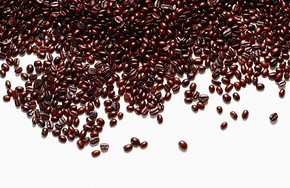A symbol of high quality: Dominica washes coffee beans
Follow the caf é (Wechat official account vdailycom) and found that Beautiful Cafe opened a small shop of its own.
The Dominican Republic is located in the east of the island of Haiti in the West Indies, bordering the Republic of Haiti to the west, the Atlantic Ocean to the north and the Caribbean Sea to the south. With an area of about 49000 square kilometers and a population of 7.1 million, the Dominican Republic and the Republic of Haiti coexist on an island bordering Haiti. Like its neighbours, the Dominican Republic had a history of revolution and poverty, but now it has democratic elections and the country is relatively stable.
In the early 18th century, coffee was introduced to Domiga from Martinique, and fine coffee was produced in the north represented by Hibao and in the south, including Okayabani Santo Domingo. Among them, the coffee produced by Santo Domingo and Barney, which is almost synonymous with domiga coffee, is a world-famous high-quality coffee. Santo Domingo coffee is characterized by freshness, elegance, fullness, excellent acidity and pleasant aroma, so it is worth it. The selection of Dominican coffee is usually done manually. The main basis for selection is according to the fullness of coffee particles, whether it is uniform, and then grade it. Generally speaking, coffee with full and uniform grains is easier to preserve. Only the fullest and most evenly grained coffee beans can be roasted to represent the best and finest coffee in the country.
In the west of Hispaniola, the harvest in the mountains above 1500 meters above sea level, the rich coffee Republic of Dominica (Dominican Republic) is adjacent to Haiti, both of which own the island of Hispaniola (Hispaniola). The best place to produce is the Barahona region in the southwest, but Juncalito and Ocoa also produce a fine coffee, Santo Domingo coffee, which is characterized by freshness and elegance, fullness, excellent acidity and pleasant aroma, so it is worth it. Unlike coffee produced in Haiti, most of the coffee grown in the Dominican Republic has been washed, which is a symbol of high quality

Coffee came to the Spanish-controlled island of Hispaniola, what is now the Dominican Republic, in 1735. The earliest coffee plantations were probably on the BahorucoPanzo hill near Neyba. By the end of the 18th century, coffee was the most important crop besides sugar, but both depended on slavery, which did not end until the revolution of 1791.
Coffee production did not really take root until 1822-1844, especially in the Valdesia region of the southern mountains. There are several coffee producing areas in the area, and by 1880 it became a major coffee manufacturing center in the country. In 1956, Dominica began to export coffee from specific producing areas, mainly Bani,Ocoa and Valdesia. In the 1960s, farmers in these areas began to become more organized, and the processing plant was established in 1967 with 155 members.
Like many coffee-producing countries, the volatility and unpredictability of coffee prices at the end of the 20th century, farmers began to reduce their dependence on coffee exports, many of whom switched to legumes or avocados, but some farmers still keep a small portion of their coffee grown waiting for prices to recover. Although Valdeisa is not a government-mandated production area, farmers in this area began to look for ways to protect the name of the production area after the launch of the Caf é de Valdesia brand in 2010.
Important Notice :
前街咖啡 FrontStreet Coffee has moved to new addredd:
FrontStreet Coffee Address: 315,Donghua East Road,GuangZhou
Tel:020 38364473
- Prev

Guayama: the birthplace of Puerto Rican culture
Following Cafe (Wechat official account vdailycom) found that the Beautiful Cafe opened a small shop of its own, Guayama: Guayama, the birthplace of Puerto Rican culture, is located on the Caribbean coast, giving birth to many artists and musicians. Composer Catalino was born here. He wrote many famous songs and spread widely. In the 20th century, the African-American Andy Lano school
- Next

Distribution of main producing areas of Dominican Coffee
Following Cafe (official account vdailycom of Wechat) found that Beautiful Cafe opened a small shop of its own to trace the origin of Tibika, starting with coffee trees originally planted in Martinique. These trees were planted by Dominicans as far back as the early 18th century, so Dominica began growing coffee as early as that time. For a time, the Caribbean was almost regarded as coffee production
Related
- Detailed explanation of Jadeite planting Land in Panamanian Jadeite Manor introduction to the grading system of Jadeite competitive bidding, Red bid, Green bid and Rose Summer
- Story of Coffee planting in Brenka region of Costa Rica Stonehenge Manor anaerobic heavy honey treatment of flavor mouth
- What's on the barrel of Blue Mountain Coffee beans?
- Can American coffee also pull flowers? How to use hot American style to pull out a good-looking pattern?
- Can you make a cold extract with coffee beans? What is the right proportion for cold-extracted coffee formula?
- Indonesian PWN Gold Mandrine Coffee Origin Features Flavor How to Chong? Mandolin coffee is American.
- A brief introduction to the flavor characteristics of Brazilian yellow bourbon coffee beans
- What is the effect of different water quality on the flavor of cold-extracted coffee? What kind of water is best for brewing coffee?
- Why do you think of Rose Summer whenever you mention Panamanian coffee?
- Introduction to the characteristics of authentic blue mountain coffee bean producing areas? What is the CIB Coffee Authority in Jamaica?

